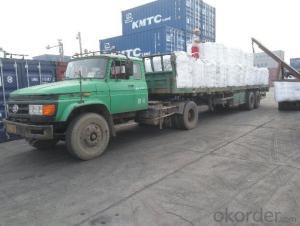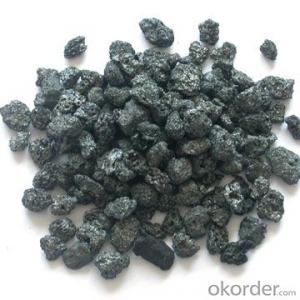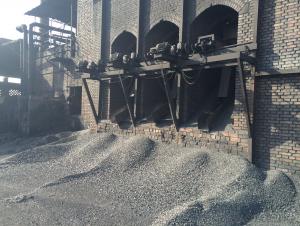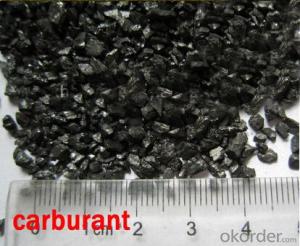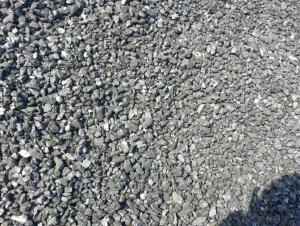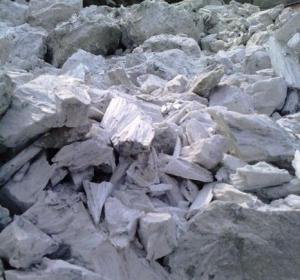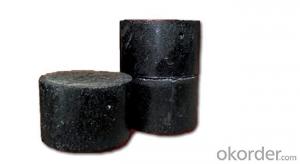Foundry Coke with Moisture0.5%max and Sulphur 0.65%max
- Loading Port:
- Dalian
- Payment Terms:
- TT OR LC
- Min Order Qty:
- 21.5
- Supply Capability:
- 1015 m.t./month
OKorder Service Pledge
OKorder Financial Service
You Might Also Like
Brief Introduction
Foundry Coke is the main fuel of melting iron in the oven. It can melt the materials in the over, make the iron reach great heat, and keep good air permeability by sustain stock column. Thus, the foundry coke should have the characteristics of big block, low reactivity, small porocity, enough anti-crush strengh, low ash and low sulphur.
The coke handled by our cooperation is made from superior coking coal of Shanxi province. Provided with the advantages of low ash, low sulphur and high carbon. Our coke is well sold in European, American, Japanese and South-east Asian markets. Our owned Coke plant are located in Shanxi Province and supplying of you many kinds of coke. We would like to be your global partner
we supply Foundry Coke long-term, its characteristic is best strength, low sulfur and phosphorus,thermal stability.
Specifications:
ASH % | 8% max | 10% max | 12% max |
V.M.% MAX | 1.5% max | 1.5% max | 2% max |
SULFUR % | 0.65% max | 0.65% max | 0.7% max |
MOISTURE | 5% max | 5% max | 5% max |
Size | 80mm-120mm,80-150,100-150mm, or as request | ||
Features
1. Our quality is always quite good and stable which is producing and packing according to customers' requirements.
2. Putting Client profile into first, achieved mutual benefit.
3. Good partner on business. It's a good and wise choice for customers' to purchase from us. It's our great honor to cooperate with you. It is more -widely used around the world
4. We can supply documents as follows:
- bill of loading,
-Invoice,
-Packing List
-Insurance
-standard inspection pictures of the container as specified by INSPECTORATE
-or more requested by buyer.
Pictures
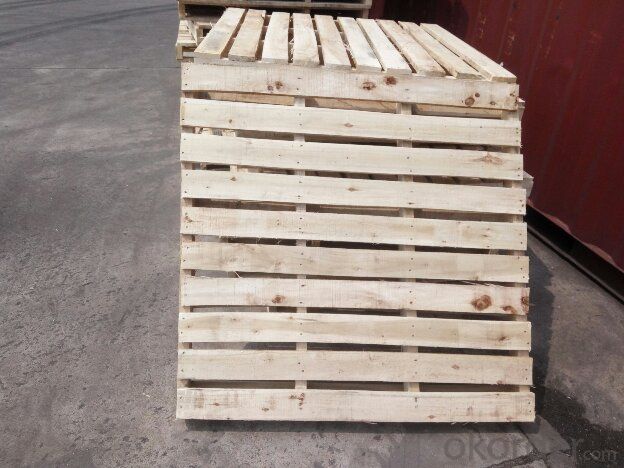
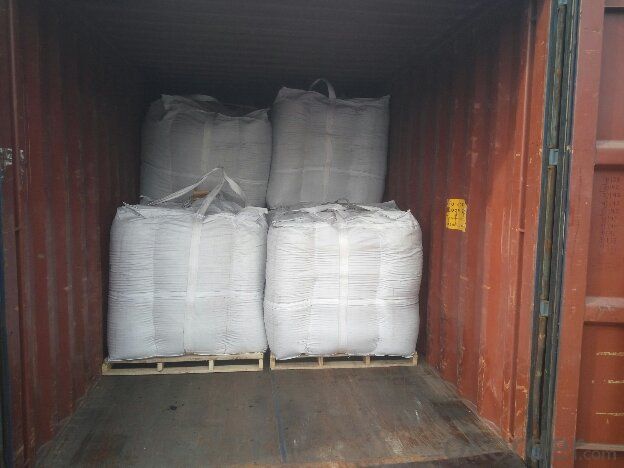
FAQ
1. What is the packing?
In 25kg bag/ In jumbo bags without pallet/ Two jumbo bags with one pallet/ or as customers’ request
2. What is the production capacity?
10 thousand tons per month
3 What is payment term?
Irrevocable LC at sight/ 20% down payment by T/T and 80% against BL copy byT/T/ or to be discussed
4 What is the service?
We will send sample to the third party(CIQ, CCIC, SGS,BV or to be discussed) for checking, and present the test certificate and loading repot of shipment.
- Q:Excuse me, carbon steel, carbon steel pipe, seamless steel pipe, spiral steel pipe, what is the difference?
- According to the appearance shape are distinguished; the so-called carbon steel pipe; welded steel pipe should be called and said seam tube material, ordinary carbon steel, the whole tube has a longitudinal seam, by forming a so called drawing strip heating tube. Carbon steel plate is composed of ordinary carbon steel plate; a winding connection of a suitable low temperature and low pressure carbon steel plate which is called muons. Seamless steel tube is made by heating the tube blank.
- Q:What is the greenhouse effect?
- Certain gases in the Earth's atmosphere naturally trap heat from the sun, preventing it from escaping back into space. These gases, like carbon dioxide (CO2), methane (CH4), and water vapor, act as a blanket, allowing sunlight to pass through but trapping the heat radiated from the Earth's surface. This process is vital for the Earth's survival as it helps maintain a relatively stable and livable temperature range. Without the greenhouse effect, the Earth's average temperature would be much colder, rendering it uninhabitable for most forms of life. However, human activities such as burning fossil fuels, deforestation, and industrial processes have significantly increased the concentration of greenhouse gases in the atmosphere. This excessive amount of greenhouse gases intensifies the greenhouse effect, leading to global warming. Global warming refers to the gradual increase in the Earth's average temperature, primarily caused by human-induced emissions of greenhouse gases. This temperature rise has far-reaching consequences, including the melting of ice caps, rising sea levels, extreme weather events, and disruption of ecosystems. While the greenhouse effect itself is a natural and necessary process, the enhanced greenhouse effect resulting from human activities contributes to climate change. Therefore, it is crucial to reduce greenhouse gas emissions and adopt sustainable practices to mitigate the adverse effects of global warming.
- Q:What are the long-term effects of increased carbon emissions on ecosystems?
- Ecosystems are significantly impacted by the increase in carbon emissions, with climate change being one of the most notable consequences. Carbon dioxide, a greenhouse gas, traps heat in the atmosphere and leads to rising temperatures, changes in weather patterns, and more frequent and intense extreme weather events like hurricanes, droughts, and wildfires. These climate changes have numerous negative effects on ecosystems. For example, the rising temperatures directly affect the behavior and physiology of plants and animals. Many species have specific temperature requirements for their survival, feeding, and reproduction. Even slight changes in temperature can disrupt their life cycles, causing population declines or even extinctions. Moreover, the increase in carbon emissions contributes to ocean acidification. This process occurs when excess carbon dioxide in the atmosphere dissolves in seawater, forming carbonic acid. The acidification has devastating consequences for marine ecosystems, especially for coral reefs and shell-forming organisms such as oysters and clams. It weakens their structures made of calcium carbonate and hinders their growth and reproduction, ultimately leading to their decline. Furthermore, carbon emissions influence the distribution and composition of plant communities. Carbon dioxide is essential for photosynthesis, and elevated levels can enhance plant growth and productivity. However, this can also result in changes in plant composition and the competitive balance between species, favoring certain fast-growing species at the expense of others. This disruption can impact the intricate relationships between plants, pollinators, herbivores, and other organisms, affecting the entire food web. Additionally, increased carbon emissions contribute to the loss of biodiversity. Many species are highly specialized and adapted to specific environmental conditions. As habitats change due to climate change, some species may struggle to adapt or find suitable alternatives, leading to declines or local extinctions. This loss of biodiversity can have cascading effects throughout ecosystems, disrupting ecological processes and reducing the resilience and stability of entire ecosystems. In conclusion, the increase in carbon emissions has far-reaching and harmful long-term effects on ecosystems. It causes climate change, ocean acidification, alters plant communities, and drives biodiversity loss. It is crucial to reduce carbon emissions and mitigate climate change in order to protect and preserve the health and functioning of ecosystems for future generations.
- Q:How does carbon affect food production?
- There are several ways in which carbon impacts food production. Firstly, carbon dioxide (CO2) plays a vital role in photosynthesis, the process by which plants convert sunlight into energy and produce oxygen. Insufficient levels of carbon dioxide hinder plant growth and food production. However, excessive carbon emissions from human activities, such as the burning of fossil fuels, have led to increased concentrations of CO2 in the atmosphere. Initially, this can stimulate plant growth, but without a proper balance of essential nutrients, it can result in nutrient imbalances and reduced crop quality. Secondly, carbon is a crucial element in soil organic matter, which is essential for soil fertility and health. Soil organic matter retains moisture, enhances soil structure, and provides a habitat for beneficial microorganisms. Higher carbon levels in the soil promote healthier plant growth, increase nutrient availability, and improve water-holding capacity. Unfortunately, unsustainable agricultural practices like excessive tilling and deforestation deplete soil carbon, leading to decreased fertility, erosion, and reduced food production. Moreover, the rise in carbon emissions has contributed to global climate change, resulting in extreme weather events such as droughts, floods, and heatwaves. These events have devastating consequences for food production. Droughts reduce water availability, making it difficult for crops to grow, while floods can wash away entire harvests. Heatwaves damage crops, reduce yields, and increase the prevalence of pests and diseases. Climate change also alters rainfall patterns, affecting planting and harvesting schedules and disrupting agricultural systems. Furthermore, carbon emissions contribute to the acidification of oceans. The increased CO2 in the atmosphere leads to higher levels of dissolved carbon dioxide in seawater, forming carbonic acid. This acidification disrupts marine ecosystems, affecting the food chain and impacting fish populations, which serve as a crucial protein source for many people. To mitigate the negative impacts of carbon on food production, it is essential to reduce carbon emissions and transition to more sustainable agricultural practices. This includes adopting climate-smart farming techniques like agroforestry, conservation agriculture, and organic farming. These practices promote carbon sequestration in soils, reduce greenhouse gas emissions, enhance biodiversity, and improve soil health. Additionally, investing in research and development of climate-resilient crop varieties and improved irrigation systems can help minimize the effects of climate change on food production.
- Q:How does carbon affect the formation of air pollution in urban areas?
- Air pollution in urban areas is significantly influenced by carbon, which exists in the form of carbon dioxide (CO2) and carbon monoxide (CO). Urban areas are characterized by high population density and intense human activities, resulting in increased emissions of carbon-based pollutants. The burning of fossil fuels like coal, oil, and natural gas releases carbon dioxide into the atmosphere, contributing to global warming and climate change. In urban areas, the combustion of fossil fuels for energy production, transportation, and heating purposes emits substantial amounts of carbon dioxide. The accumulation of CO2 in the atmosphere traps heat, causing the urban heat island effect and exacerbating air pollution issues. Another carbon-based pollutant, carbon monoxide, primarily originates from vehicle exhausts and industrial processes. In urban areas with heavy traffic congestion, carbon monoxide levels tend to be high. This gas is particularly harmful as it impairs the blood's oxygen-carrying ability, resulting in various health problems, especially for individuals with pre-existing respiratory conditions. Moreover, the presence of carbon in urban areas promotes the formation of secondary air pollutants like ozone and particulate matter. Carbon reacts with other pollutants, such as nitrogen oxides (NOx) and volatile organic compounds (VOCs), under sunlight, leading to the creation of ground-level ozone. Ozone is a harmful gas that causes respiratory issues and harms vegetation. Additionally, carbon-based pollutants contribute to the generation of fine particulate matter (PM2.5) in urban areas. These particles are small enough to be inhaled deep into the lungs, causing respiratory and cardiovascular problems. Particulate matter also reduces visibility, leads to smog formation, and deposits harmful substances on surfaces. To combat air pollution in urban areas, it is crucial to reduce carbon emissions. This can be achieved through various strategies, including promoting clean energy sources, implementing stricter emission standards for vehicles and industries, and encouraging sustainable transportation options like public transit and cycling. By addressing carbon emissions, we can effectively reduce air pollution and enhance the overall air quality in urban areas, resulting in healthier and more sustainable cities.
- Q:What are carbon nanomaterials?
- Carbon nanomaterials are a class of materials that are composed of carbon atoms arranged in various structures at the nanoscale. These structures can include carbon nanotubes, fullerenes, and graphene. Carbon nanotubes are cylindrical structures made up of rolled-up sheets of graphene, while fullerenes are closed-cage molecules consisting of carbon atoms. Graphene, on the other hand, is a single layer of carbon atoms arranged in a hexagonal lattice. Carbon nanomaterials possess unique properties that make them highly desirable for a wide range of applications. They exhibit exceptional mechanical strength, high electrical and thermal conductivity, as well as excellent chemical stability. These properties arise from the strong covalent bonds between carbon atoms and the unique arrangements of these atoms in the nanoscale structures. Due to their remarkable characteristics, carbon nanomaterials have found numerous applications in various fields. They are used in electronics and computing devices, where their high electrical conductivity and small size make them ideal for creating faster, smaller, and more efficient components. Carbon nanotubes have also been utilized in composite materials to enhance their mechanical strength and durability. Furthermore, carbon nanomaterials have shown promise in the field of medicine and healthcare. They can be used for drug delivery systems, where they can encapsulate and transport drugs to specific targets in the body. Carbon nanomaterials have also been investigated for their antibacterial properties, making them potential candidates for developing antimicrobial coatings and surfaces. Overall, carbon nanomaterials are a diverse class of materials with exceptional properties that have led to numerous exciting applications in various industries. As research continues, their potential uses are likely to expand, revolutionizing fields such as electronics, medicine, and materials science.
- Q:How does carbon affect the taste of food and beverages?
- The taste of food and beverages can be significantly altered by carbon, which can come in the form of activated charcoal or carbonation. Activated charcoal is known for its ability to absorb impurities and toxins, making it a popular ingredient in various food and drink products. When added to food and beverages, activated charcoal can eliminate unpleasant smells and tastes, resulting in a cleaner and more enjoyable flavor. Carbonation, on the other hand, is widely used in beverages to create a fizzy sensation and enhance the overall sensory experience. By dissolving carbon dioxide gas in liquids under pressure, bubbles are formed when the pressure is released, giving the drink a refreshing and effervescent quality. This carbonation effect can impart a tangy or slightly acidic taste to the beverage, which is often considered pleasant and invigorating. Furthermore, carbonation can also impact the taste of food. For instance, the carbonation found in beer or sparkling wine can help balance the richness of certain dishes, adding a refreshing element and providing a cleanse for the palate. Carbonation can also be incorporated into certain foods, such as bread or pastry dough, to aid in rising and create a lighter texture. It is worth noting that the impact of carbon on the taste of food and beverages can vary depending on the specific application and concentration used. Additionally, the preference for carbonated or charcoal-free options is subjective, as some individuals may prefer non-carbonated alternatives. Ultimately, the use of carbon in culinary applications offers a multitude of possibilities for enhancing taste and providing unique sensory experiences.
- Q:Want advanced reinforcement, but I do not know where the high furnace rock carbon, looking for someone to guide...
- Mall. In fact, BUG can be card out! Inside the palace there is that BUG, but I personally think that no use, I used to strengthen the use of advanced carbon weapons on 12, even 3 did not become a storm, this is only the way to make money TX it
- Q:What are the different types of carbon-based pigments?
- There are several different types of carbon-based pigments that are widely used in various industries. Some of the most common types include carbon black, graphite, charcoal, and lampblack. Carbon black is a highly pure form of carbon that is produced by the incomplete combustion of hydrocarbon fuels. It is the most widely used carbon-based pigment and is known for its intense black color. Carbon black is used in a wide range of applications, including inks, paints, plastics, and rubber products. Graphite is another important carbon-based pigment that is known for its dark gray to black color. It is a soft and brittle material that can be easily crushed into a fine powder. Graphite is used primarily in pencils, as it leaves a smooth and consistent mark on paper. It is also used in other applications such as lubricants, batteries, and electrical conductors. Charcoal is a carbon-based pigment that is produced by burning wood or other organic materials in the absence of oxygen. It is known for its deep black color and is commonly used in art as a drawing medium. Charcoal can be easily manipulated and smudged on paper, allowing artists to create a wide range of tones and textures. Lampblack, also known as carbon black or soot, is a pigment that is produced by burning organic materials such as oil or wood. It has a deep black color and is often used in printing inks, coatings, and dyes. Lampblack is also used in various industrial applications, including as a coloring agent in plastics and rubber products. These are just a few examples of the different types of carbon-based pigments that are commonly used. Each type has its own unique properties and applications, making them versatile and essential in various industries.
- Q:How are carbon markets regulated?
- Carbon markets are regulated through a combination of international, national, and regional frameworks that aim to ensure the integrity and transparency of emissions trading. One of the main international bodies overseeing carbon markets is the United Nations Framework Convention on Climate Change (UNFCCC), which established the Kyoto Protocol and the Paris Agreement. Under the Kyoto Protocol, an international emissions trading system was created, allowing countries to trade emission allowances through the Clean Development Mechanism (CDM) and Joint Implementation (JI) projects. The CDM and JI projects are approved and monitored by the UNFCCC, which ensures that emission reductions are real, measurable, and additional to what would have occurred without the project. The Paris Agreement, which succeeded the Kyoto Protocol, introduced a new market mechanism called the Sustainable Development Mechanism (SDM). The SDM aims to promote sustainable development and help countries achieve their climate goals by enabling emission reductions and removals through projects in developing countries. At the national and regional level, governments and regulatory bodies play a crucial role in the regulation of carbon markets. They establish legal frameworks, set emission reduction targets, and develop domestic emissions trading systems. These systems typically involve the allocation of emission allowances to companies or sectors, monitoring and reporting of emissions, and the trading of allowances on regulated platforms. To ensure the integrity of carbon markets, strict regulations are put in place to prevent fraud, double-counting, and other forms of market manipulation. Independent verification and accreditation bodies are responsible for auditing emissions data and project methodologies to ensure compliance with the established rules and standards. Furthermore, market oversight and enforcement bodies are established to monitor and enforce compliance with the regulations. These bodies have the authority to investigate and penalize any non-compliance, including imposing fines or revoking emission allowances. Overall, the regulation of carbon markets involves a complex network of international agreements, national legislation, and regulatory bodies. The aim is to create a robust and transparent market that incentivizes emission reductions and supports the transition to a low-carbon economy.
1. Manufacturer Overview |
|
|---|---|
| Location | |
| Year Established | |
| Annual Output Value | |
| Main Markets | |
| Company Certifications | |
2. Manufacturer Certificates |
|
|---|---|
| a) Certification Name | |
| Range | |
| Reference | |
| Validity Period | |
3. Manufacturer Capability |
|
|---|---|
| a)Trade Capacity | |
| Nearest Port | |
| Export Percentage | |
| No.of Employees in Trade Department | |
| Language Spoken: | |
| b)Factory Information | |
| Factory Size: | |
| No. of Production Lines | |
| Contract Manufacturing | |
| Product Price Range | |
Send your message to us
Foundry Coke with Moisture0.5%max and Sulphur 0.65%max
- Loading Port:
- Dalian
- Payment Terms:
- TT OR LC
- Min Order Qty:
- 21.5
- Supply Capability:
- 1015 m.t./month
OKorder Service Pledge
OKorder Financial Service
Similar products
New products
Hot products
Hot Searches
